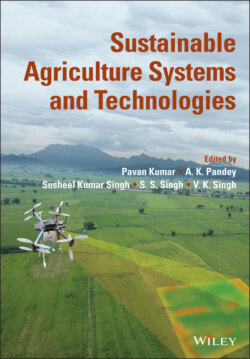Читать книгу Sustainable Agriculture Systems and Technologies - Группа авторов - Страница 37
2.7.2 Diversification with Pulse‐Based Cropping Systems in Different Agroclimatic Zones
ОглавлениеLegumes are the crops very vital for a successful crop diversification plan of any area. These crops through, biological N fixation, maintain optimum soil health and good soil fertility. An ideal crop diversification plan must include leguminous crops either as sequence cropping or intercropping. Recognizing the importance of pulses for meeting dietary requirements of vast vegetarian population on one hand and their role in improving soil health and conserving natural resources on the other, the efforts were made to develop high yielding, short duration and disease resistant varieties of different pulse crops which can help in diversification and intensification of popular cropping systems. The development of short duration, disease‐resistant and high yielding varieties in the recent past made these crops a viable alternative to low yielding coarse cereals under rainfed conditions and also provided an opportunity for expansion in rice fallows and in double cropping systems. Due to the reasons of source of nutritious food, feed, and forage, pulses are an integral part of subsistence cropping system in large part of the country. The pulses are grown in almost all types of cropping systems as a sole crop, intercrop, catch crop, relay crop, cover crop, and green manure crop, etc., under sequential/mono‐cropping in different agroecological regions. Under dryland areas pulses are predominant due to their low water requirements. The development of short duration varieties of mungbean, urdbean, and pigeonpea has paved way for crop diversification and intensification in many parts of IGP zones (Table 2.4).
